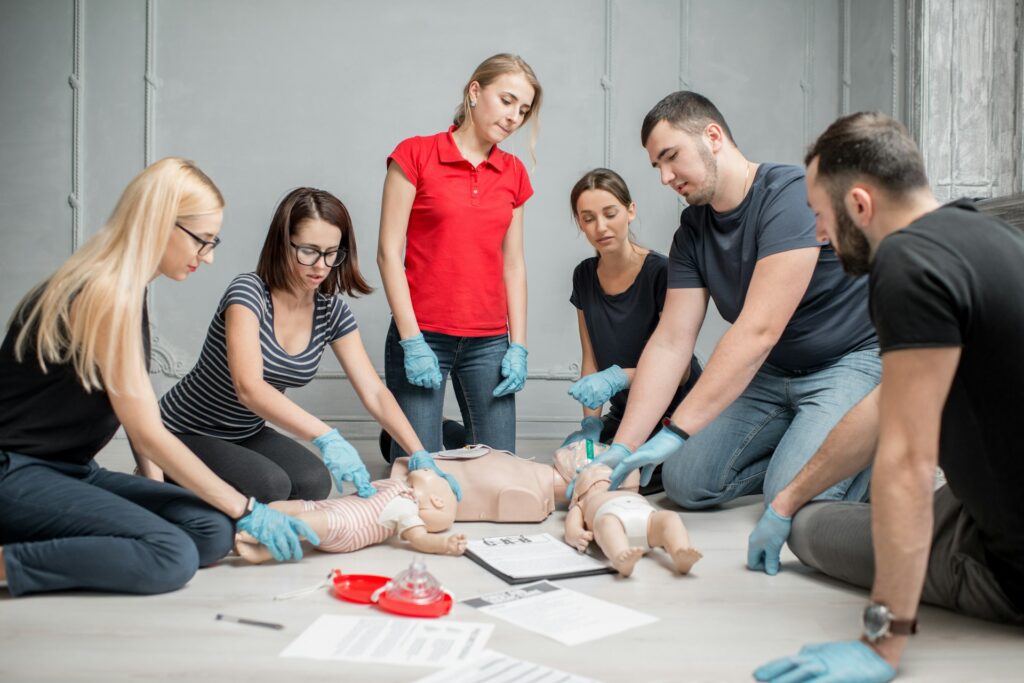
Every company, no matter its size or industry, needs health and safety training. This kind of training ensures that employees know how to work safely and respond to potential hazards. It’s more than just following rules and regulations—it’s about creating a culture where safety is a priority. Health and safety training can prevent accidents, reduce risks, and ensure that everyone goes home safely at the end of the day.
The Importance of Health and Safety Training
Health and safety training is crucial for any workplace. It ensures that employees know how to conduct their tasks safely and respond appropriately to hazards. This type of training saves lives and prevents injuries. It creates a safer atmosphere where employees can work without fear of accidents.
Accidents can have severe consequences. They can result in personal injury, emotional distress, and even death. For the company, accidents lead to lost productivity, legal issues, and increased insurance costs. By investing in health and safety training, you can avoid these problems. It’s essential for employees to understand how to identify potential dangers, use equipment correctly, and follow the necessary safety procedures.
Health and safety training also has economic benefits. When employees are properly trained, the number of accidents decreases. This means fewer workdays lost due to injury and lower costs associated with medical care and legal fees. It’s a proactive investment that ultimately saves money and keeps everyone safe.
Key Components of Effective Health and Safety Programs
An effective health and safety program has several key components. These elements work together to ensure that safety is a consistent focus in the workplace.
1. Risk Assessment: The first step is identifying potential hazards. Conduct a thorough assessment of the workplace to find any areas that might pose a risk to employees.
2. Clear Policies and Procedures: Develop and implement clear health and safety policies. Make sure everyone understands these procedures and follows them consistently.
3. Training and Education: Provide regular training sessions for all employees. This includes new hires as well as ongoing refresher courses for existing staff.
4. Emergency Preparedness: Prepare for emergencies by having clear plans in place. Train employees on what to do in different emergency situations, such as fires or chemical spills.
5. Regular Inspections: Conduct regular inspections to ensure that safety equipment is in good condition and that safety procedures are being followed.
6. Communication: Encourage open communication about safety concerns. Create an environment where employees feel comfortable reporting hazards or unsafe practices.
7. Record Keeping: Maintain detailed records of all safety training, incidents, and inspections. This helps track progress and makes it easier to identify areas needing improvement.
By integrating these components, you can create a robust health and safety program that protects employees and promotes a culture of safety.
Benefits of Health and Safety Training for Your Company
Health and safety training offers many advantages for companies. One significant benefit is reduced workplace accidents. Fewer accidents mean fewer injuries, which helps maintain a stable workforce. This also leads to lower medical costs and fewer workers’ compensation claims.
Another benefit is increased productivity. When employees work in a safe environment, they can focus better on their tasks without worrying about potential hazards. This peace of mind boosts efficiency and morale. Employees who feel safe are more engaged and motivated, which directly impacts output quality and quantity.
Health and safety training also enhances a company’s reputation. Clients and partners prefer to work with responsible businesses that prioritize safety. A strong safety record can be a competitive advantage, attracting top talent and high-profile clients. It shows that the company values its employees, which builds trust and loyalty.
How to Implement a Successful Health and Safety Training Program
Setting up a successful health and safety training program involves several key steps. Follow these steps to create a robust program that keeps everyone safe.
1. Assess Needs and Objectives: Start by evaluating the specific safety needs of your workplace. Identify the common risks and the kind of training your employees need. Set clear goals for what the training should achieve.
2. Develop Training Materials: Create training materials that cover all necessary topics, such as hazard identification, emergency procedures, and proper equipment use. Use simple language and include visual aids to make the content easy to understand.
3. Choose Qualified Trainers: Select trainers who have expertise in health and safety. They should be able to engage employees and explain complex concepts in a way that’s easy to grasp.
4. Schedule Regular Training Sessions: Conduct training sessions regularly. This ensures that all employees, including new hires, receive up-to-date instruction on safety practices. Refresher courses help keep everyone informed about any changes in procedures or regulations.
5. Engage Employees: Make the training interactive and engaging. Use hands-on activities and real-life scenarios to help employees apply what they learn. Encourage questions and discussions to clarify doubts.
6. Evaluate and Improve: Assess the effectiveness of your training program through feedback and performance reviews. Use this information to make necessary improvements. Regularly update the training materials to reflect any changes in safety standards or workplace conditions.
By following these steps, you can implement a health and safety training program that effectively protects your employees and enhances your company’s safety culture.
Conclusion
Health and safety training is essential for creating a safe work environment. It protects employees from accidents and injuries, leading to a happier and more productive workforce. A comprehensive safety training program reduces costs related to workplace accidents and enhances a company’s reputation. By assessing needs, developing training materials, choosing qualified trainers, scheduling regular sessions, engaging employees, and continuously improving, yu establish a successful health and safety training program.
Don’t leave safety to chance. Prioritize your workplace safety with expert programs from LIFT Training. Our specialized health and safety training in Ontario ensure your team is well-prepared to handle any situation safely. Contact us today to improve your workplace safety and safeguard your employees.
